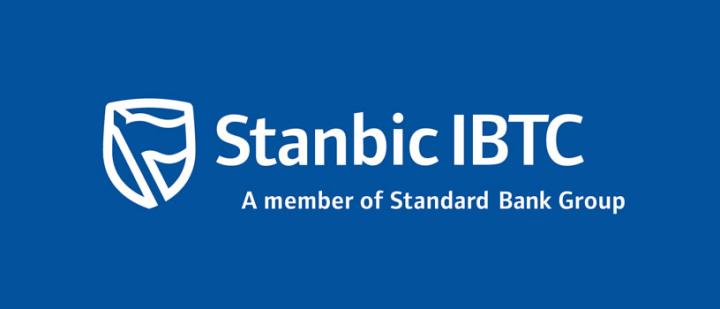Stanbic IBTC Holdings Plc has reported a remarkable profit after tax of ₦278.48 billion for the nine months ending September 30, 2025, showcasing a strong improvement from the ₦182.87 billion recorded in the same period of 2024. The performance underscores the group’s strategic resilience and effective execution in navigating Nigeria’s complex economic climate, despite high inflation, fluctuating exchange rates, and tight monetary policies.
According to its financial statement released to the Nigerian Exchange, the group’s profit before tax surged to ₦393.84 billion from ₦222.93 billion a year earlier, reflecting a 77 percent rise. This impressive growth was largely driven by an increase in net interest income, improved cost management, and reduced credit impairments. The result highlights the success of the bank’s balance-sheet optimization strategy and prudent risk management practices, which have strengthened profitability and shareholder value.

Stanbic IBTC’s net interest income grew significantly to ₦454.59 billion, compared to ₦251.85 billion in the corresponding period of 2024. This increase was attributed to higher yields on earning assets and a disciplined approach to interest expense management. Despite the challenging macroeconomic environment, the bank successfully leveraged favorable monetary conditions and maintained a healthy loan-to-deposit ratio, which supported its core banking revenues.
Non-interest revenue, which includes income from trading, fees, and commissions, stood at ₦200.58 billion for the period. Although slightly lower than the ₦214.01 billion recorded in 2024, the decline was offset by strong growth in other income lines and sustained performance in asset management and pension businesses. This reflects the group’s diversified business model, which cushions it from volatility in individual revenue streams.
A major highlight of the report is the sharp drop in impairment charges. Net impairment charges fell to ₦11.64 billion, compared to ₦59.38 billion a year earlier, representing an 80 percent decline. The drop was linked to improved loan quality, effective risk monitoring, and enhanced recovery efforts. This development provided a significant boost to profitability as the bank kept credit losses under control, even amid sector-wide concerns about rising default risks.
Operating expenses increased to ₦249.69 billion from ₦183.55 billion in 2024, reflecting inflationary pressures, expansion activities, and increased technology investments. The group, however, maintained a stable cost-to-income ratio, supported by efficient resource allocation and revenue growth. Management emphasized that spending on digital transformation and infrastructure was necessary to sustain long-term growth and operational efficiency.
In the third quarter alone, Stanbic IBTC achieved a profit after tax of ₦105.05 billion, up from ₦68.85 billion in the same quarter of the previous year. This quarterly performance indicates sustained growth momentum, bolstered by improved net interest margins and increased contributions from non-bank subsidiaries, including its pension and asset management arms.
The group’s total comprehensive income reached ₦289.80 billion, compared to ₦181.70 billion in the previous year, reflecting gains from fair-value instruments and overall operational strength. Profit attributable to equity holders stood at ₦275.29 billion, while non-controlling interests accounted for ₦3.18 billion. This translated to an earnings per share of ₦17.31, higher than ₦13.90 recorded in 2024, underscoring enhanced value creation for shareholders.
Financial analysts have described the result as one of the strongest performances among Nigerian banks so far in 2025. They noted that Stanbic IBTC’s combination of solid capital adequacy, diversified income streams, and reduced loan impairments has placed it in a robust position ahead of the full-year results. The improved profitability also suggests a potential for attractive dividends, given the bank’s consistent record of rewarding shareholders.
The bank’s management attributed the solid performance to its strategic focus on operational excellence, customer satisfaction, and innovation across all business lines. The chief executive officer highlighted that the group’s consistent growth reflects its ability to adapt to evolving market dynamics and regulatory requirements while maintaining financial stability.
Industry observers also note that Stanbic IBTC’s success provides a positive signal for Nigeria’s broader financial sector. The results demonstrate that despite macroeconomic challenges—ranging from foreign exchange volatility to inflationary pressure—effective risk management, innovation, and cost discipline can drive strong performance.
Looking ahead, Stanbic IBTC is expected to continue its growth trajectory as it invests more in digital banking, sustainable finance, and customer-centric products. The group’s diversified structure, which includes banking, pensions, insurance, and asset management subsidiaries, provides it with a unique advantage in mitigating risks and expanding revenue opportunities.
As the year draws to a close, investors will be closely watching the bank’s full-year performance and dividend declarations. The ₦278.48 billion profit reflects not just the resilience of the institution but also its commitment to delivering long-term value to shareholders and contributing to the stability of Nigeria’s financial system.
Stanbic IBTC’s strong financial showing reaffirms its position as one of Nigeria’s leading financial institutions, setting a benchmark for efficiency, innovation, and sustainable profitability within the country’s competitive banking landscape.
Support InfoStride News' Credible Journalism: Only credible journalism can guarantee a fair, accountable and transparent society, including democracy and government. It involves a lot of efforts and money. We need your support. Click here to Donate
